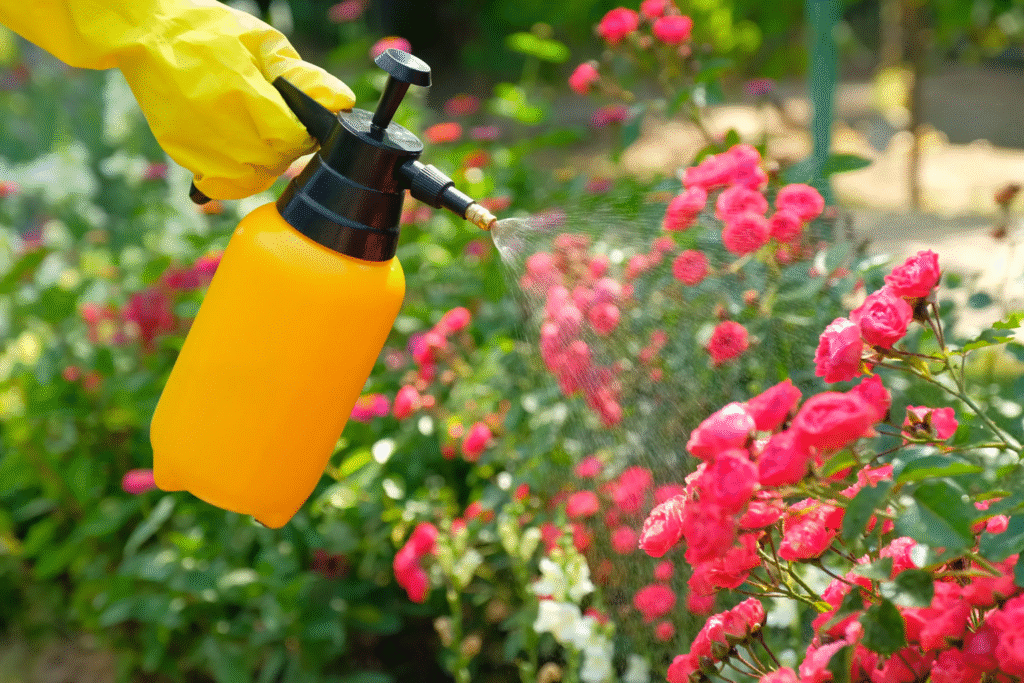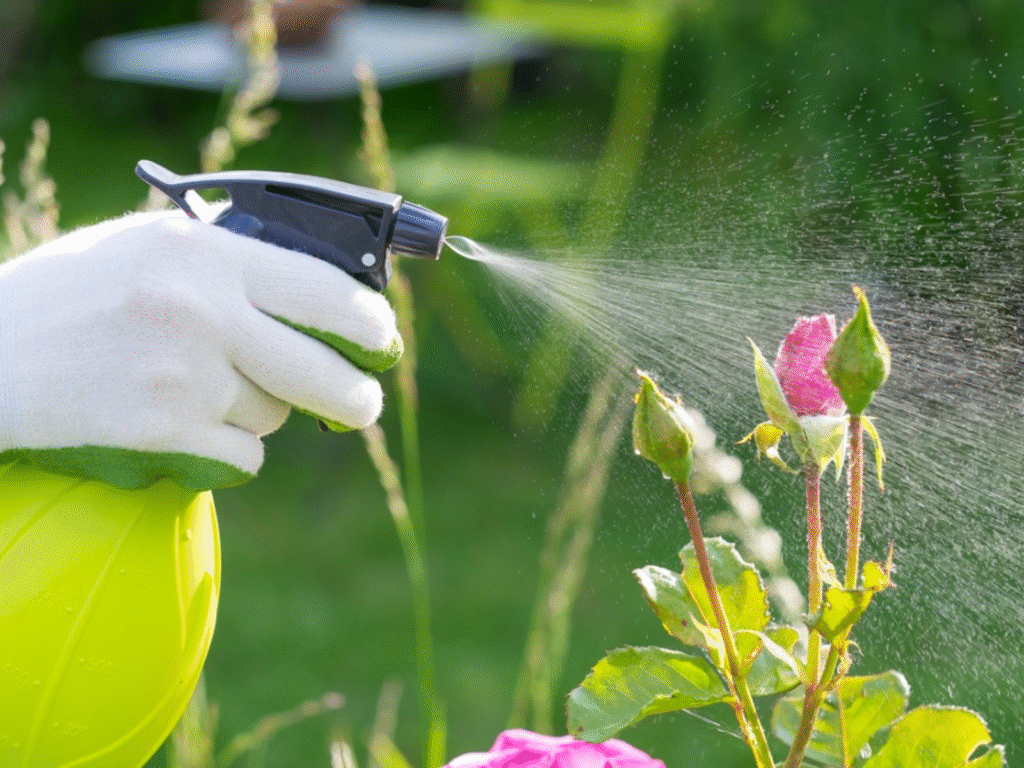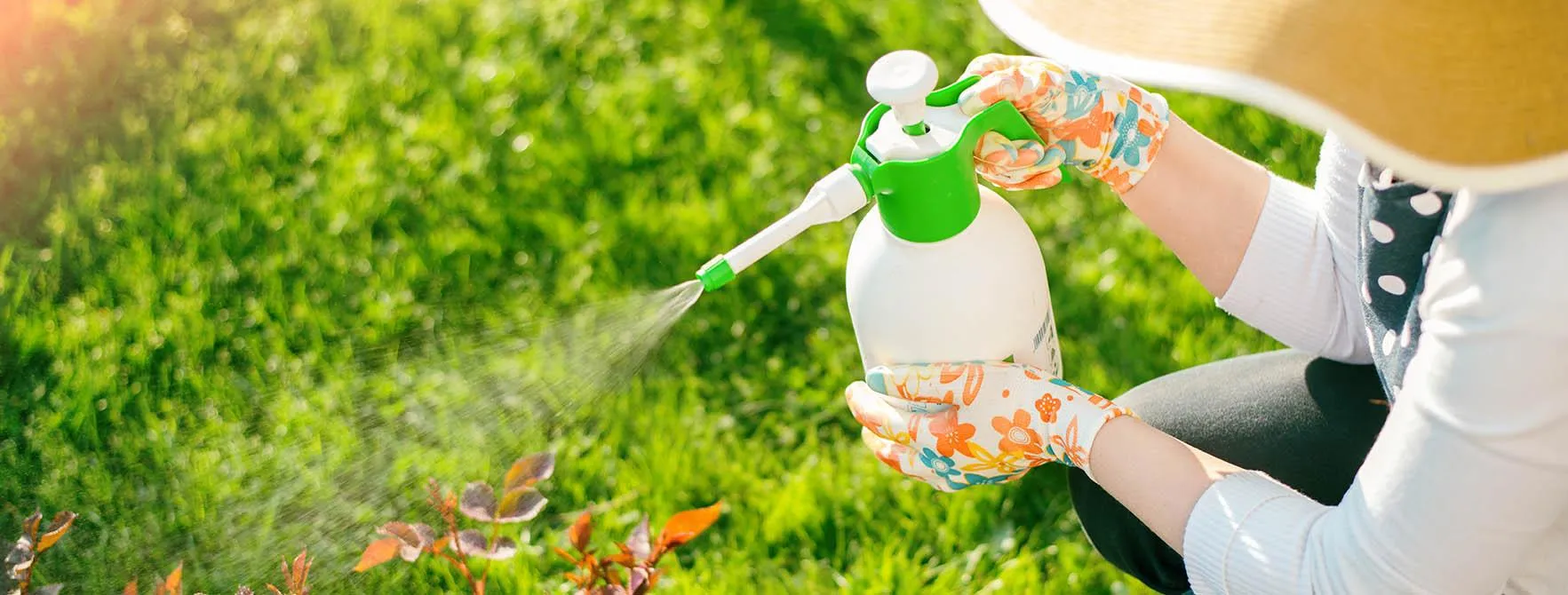What Is Organic Pest Control? A Comprehensive Guide
When you’re tending to your garden or maintaining your home, few things are as frustrating as discovering a pest infestation. Whether it’s aphids devouring your prized roses or ants marching across your kitchen counter, these unwelcome visitors can quickly become a significant problem. While conventional pesticides offer a quick fix, more and more homeowners are turning to organic pest control methods that are safer for their families, pets, and the environment.
Understanding Organic Pest Control
Organic pest control refers to methods of managing and eliminating pests using natural substances and processes rather than synthetic chemicals. This approach focuses on prevention, biological controls, and natural deterrents that work with nature rather than against it. Unlike conventional pesticides, which often contain toxic chemicals that can persist in the environment for years, organic methods break down naturally without leaving harmful residues.
The philosophy behind organic pest control is holistic, aiming to create balanced ecosystems where pests are kept in check by natural processes. Rather than simply eliminating pests, organic methods seek to understand why they’re thriving in the first place and address those root causes.
The Benefits of Going Organic
Choosing organic pest control offers numerous advantages beyond just getting rid of bugs. When you opt for natural methods, you’re making a choice that benefits your health, your garden, and the planet as a whole.
Health and Safety: Conventional pesticides have been linked to a range of health concerns, from immediate issues like skin irritation and respiratory problems to long-term risks such as certain cancers and neurological effects. According to the Environmental Protection Agency (EPA), pesticide exposure can be particularly dangerous for children, whose developing bodies are more vulnerable to toxic chemicals. By using organic methods, you can protect your family from these potential hazards.
The Centers for Disease Control and Prevention (CDC) reports that every year, thousands of Americans experience pesticide poisoning. By switching to organic methods, you significantly reduce the risk of accidental poisoning in your household. You can find more information about pesticide safety on the CDC’s pesticide webpage.
Environmental Protection: Chemical pesticides don’t just affect their target species—they can harm beneficial insects, birds, and other wildlife as well. Many conventional pesticides are particularly devastating to pollinators like bees and butterflies, which are essential for growing fruits and vegetables. Organic pest control methods are typically more selective, targeting specific pests while sparing beneficial organisms.
Soil Health: Synthetic pesticides can disrupt the complex ecosystem of microorganisms in your soil, which are crucial for plant health. Organic methods, on the other hand, often enhance soil biology. Healthy soil creates healthier plants, which are naturally more resistant to pests and diseases.
Cost-Effectiveness: While some organic products might have a higher upfront cost than conventional pesticides, they often save you money in the long run. Many DIY organic solutions can be made from inexpensive household items, and preventing pest problems through organic practices can reduce the need for treatments altogether.
Common Organic Pest Control Methods
Organic pest control encompasses a wide range of techniques, from preventive measures to active interventions. Here are some of the most effective approaches you can implement in your home and garden:

Cultural Controls
Cultural controls involve modifying the environment to make it less hospitable to pests. These preventive measures are the foundation of organic pest management:
Crop Rotation: If you’re a vegetable gardener, rotating where you plant different crops each year prevents pest populations from becoming established. For example, if you grow tomatoes in the same spot year after year, tomato-specific pests will build up in that soil.
Companion Planting: Certain plants naturally repel specific pests when grown together. For instance, marigolds deter nematodes, while basil planted near tomatoes can repel hornworms. Strategic plant pairings can create a garden that naturally discourages pest invasions.
Proper Sanitation: Regularly cleaning up fallen fruits, removing diseased plants, and keeping your garden tidy eliminates breeding grounds and food sources for many pests. Inside your home, maintaining cleanliness, especially in the kitchen, can prevent ant and cockroach infestations.
Timing: Planting at the right time can help your crops avoid peak pest seasons. For example, planting squash a bit later in the season might help them escape squash vine borers that emerge in early summer.
Physical Barriers and Traps
Sometimes the simplest solutions are the most effective. Physical controls directly block or capture pests:
Row Covers: Lightweight fabric barriers allow light and water to reach your plants while keeping insects away. These are particularly effective against flying pests like cabbage moths and carrot flies.
Sticky Traps: Yellow or blue sticky cards attract and trap flying pests like whiteflies, fungus gnats, and fruit flies. These can be particularly useful in greenhouses and indoor plant collections.
Diatomaceous Earth: This powder, made from fossilized aquatic organisms, has microscopic sharp edges that cut through insects’ exoskeletons, causing them to dehydrate. It’s effective against crawling pests like ants, cockroaches, and slugs.
Handpicking: For larger pests like tomato hornworms or Japanese beetles, simply picking them off by hand can be surprisingly effective, especially in smaller gardens.
Biological Controls
Biological control involves using living organisms to manage pest populations—essentially fighting nature with nature:
Beneficial Insects: Ladybugs, lacewings, praying mantises, and parasitic wasps are natural predators that feed on common garden pests. Releasing these beneficial insects in your garden can help keep pest populations in check.
Nematodes: These microscopic worms prey on soil-dwelling pests like grubs and fungus gnat larvae. Applied as a soil drench, beneficial nematodes seek out and kill these underground pests.
Bacillus thuringiensis (Bt): This naturally occurring soil bacterium produces proteins that are toxic to specific insect larvae but harmless to humans, pets, and most beneficial insects. Different strains target different pests, such as mosquitoes, caterpillars, or Colorado potato beetles.
Predatory Mites: These tiny arachnids feed on pest mites like spider mites and russet mites, providing targeted control for these common plant pests.
Natural Sprays and Repellents
When prevention isn’t enough, natural sprays can help address active infestations:
Neem Oil: Derived from the seeds of the neem tree, this versatile oil disrupts insects’ hormonal systems, deterring feeding and reproduction. It’s effective against a wide range of pests, from aphids and mealybugs to Japanese beetles.
Insecticidal Soaps: These specially formulated soaps break down the protective outer layer of soft-bodied insects like aphids, whiteflies, and mites, causing them to dehydrate and die.
Essential Oils: Many plant oils have insect-repelling properties. Peppermint oil deters ants and spiders, while citronella repels mosquitoes. These can be diluted and sprayed around your home or garden.
Garlic and Hot Pepper Sprays: Homemade sprays made from strong-smelling ingredients like garlic, hot peppers, or onions can repel many insects due to their powerful odors and irritating compounds.
Comparing Organic vs. Conventional Pesticides
To understand why organic pest control has gained popularity, it’s helpful to compare it with conventional chemical approaches:
| Aspect | Organic Pest Control | Conventional Pesticides |
|---|---|---|
| Active Ingredients | Plant extracts, minerals, biological agents | Synthetic chemicals |
| Persistence in Environment | Typically breaks down quickly | May persist for months or years |
| Target Specificity | Often affects only target pests | May kill beneficial insects and wildlife |
| Resistance Development | Less common | Pests frequently develop resistance |
| Human Health Risk | Generally low when used correctly | Potential for acute and chronic toxicity |
| Impact on Soil Biology | Usually maintains or enhances soil life | Can disrupt soil microbiome |
| Cost | Variable, often lower long-term | Lower upfront cost but may increase over time |
| Effectiveness Timeline | May work more slowly | Often provides rapid knockdown |
| Regulatory Oversight | Varies, some exempt from registration | Strictly regulated by EPA |
As you can see from this comparison, while conventional pesticides might offer quicker results, organic methods typically provide more sustainable, safer pest management over time.
Implementing an Organic Pest Management Strategy
Effective organic pest control isn’t about finding a single magic solution—it’s about implementing an integrated approach known as Integrated Pest Management (IPM). According to the USDA National Institute of Food and Agriculture, IPM combines multiple strategies to manage pests in the most effective, economical, and environmentally sensitive way.
Here’s how you can develop your own organic IPM plan:

Step 1: Identify and Monitor
The first step in managing any pest problem is proper identification. Different pests require different control methods, and misidentification can lead to ineffective treatments. Take time to:
Learn your pests: Familiarize yourself with common pests in your region and their life cycles. The Cooperative Extension System offers resources specific to your location.
Inspect regularly: Check your plants and home frequently for signs of pest activity. Early detection makes control much easier.
Set thresholds: Determine how much pest damage you’re willing to tolerate before taking action. A few aphids on one rose bush might not warrant intervention, while an entire plant covered in them would.
Step 2: Prevention First
The best way to deal with pests is to prevent them from becoming a problem in the first place:
Choose resistant varieties: When selecting plants for your garden, look for varieties bred to resist common pests and diseases.
Create diversity: Monocultures (large areas of a single plant type) are more susceptible to pest outbreaks. Mix different plants together to confuse pests and attract a variety of beneficial insects.
Maintain plant health: Well-nourished, appropriately watered plants are naturally more resistant to pests and disease. Use organic compost and mulch to build soil health.
Encourage biodiversity: Create habitat for birds, beneficial insects, and other natural predators by including native plants, water sources, and shelter in your landscape.
Step 3: Start Small and Escalate as Needed
When pests do appear, begin with the least invasive methods:
Mechanical controls: Start with handpicking, water sprays, or vacuuming to physically remove pests.
Biological controls: If mechanical methods aren’t sufficient, introduce beneficial organisms that prey on your specific pests.
Botanical controls: When necessary, apply natural sprays and repellents, starting with the mildest options first.
Commercial organic products: As a last resort, consider OMRI-listed (Organic Materials Review Institute) products designed for specific pest problems.
Case Study: Organic Control of Common Garden Pests
To illustrate how organic pest control works in practice, let’s look at how you might address some common garden pests:
Aphids: These small, soft-bodied insects cluster on new growth and suck plant juices. For light infestations, a strong spray of water can dislodge them. Introducing ladybugs or lacewings provides biological control. For persistent problems, insecticidal soap or neem oil spray can be effective.
Tomato Hornworms: These large green caterpillars can defoliate tomato plants quickly. Handpicking is surprisingly effective for these visible pests. Planting dill or basil nearby can attract parasitic wasps that lay eggs on the hornworms. For serious infestations, Bt (Bacillus thuringiensis) spray specifically targets caterpillars while sparing beneficial insects.
Squash Bugs: These shield-shaped bugs feed on squash, pumpkins, and cucumbers. Prevention includes crop rotation and using row covers until flowering. Trap crops like blue hubbard squash can draw pests away from your main crop. Neem oil can help control nymphs, while diatomaceous earth creates a barrier adults won’t cross.
Japanese Beetles: These metallic green beetles skeletonize leaves and flowers. Handpicking in the early morning when they’re sluggish can reduce populations. Milky spore, a biological control, can be applied to soil to control larvae. Covering prized plants with row covers during peak season provides protection.
Indoor Organic Pest Control
Organic pest control isn’t limited to the garden—you can apply similar principles inside your home:
Kitchen Ants: Instead of toxic sprays, try cleaning thoroughly with vinegar to remove scent trails. Cinnamon, coffee grounds, or citrus peels create natural barriers ants won’t cross. Mix equal parts borax and sugar as a natural ant bait that workers will carry back to the colony.
Fruit Flies: Prevent them by keeping fruits refrigerated or in sealed containers. Make a trap by placing apple cider vinegar and a drop of dish soap in a jar with a paper funnel. The vinegar attracts the flies, and the soap breaks the surface tension so they drown.
Cockroaches: Diatomaceous earth sprinkled in cracks and crevices dehydrates roaches that walk through it. Boric acid (use with caution around children and pets) works similarly. Keep your home meticulously clean and seal all food in airtight containers to remove their food sources.
Bed Bugs: While challenging to control organically, options include thoroughly vacuuming, steam treatment (bed bugs die at 113°F), and diatomaceous earth in cracks and crevices. Encasing mattresses and box springs can trap existing bugs and prevent new infestations.

Challenges and Limitations of Organic Pest Control
While organic pest control offers many benefits, it’s important to be realistic about its limitations:
Time and Patience: Organic solutions often work more slowly than chemical alternatives. They typically focus on long-term control rather than immediate eradication.
Knowledge Required: Effective organic pest management requires learning about pest life cycles, beneficial insects, and ecological relationships. This educational investment pays off but takes time.
Weather Dependence: Many organic products break down quickly in sunlight or rain, requiring more frequent application than synthetic alternatives.
Severe Infestations: In cases of extremely high pest populations or advanced infestations, organic methods alone might struggle to regain control quickly enough to save crops or prevent structural damage.
Cost Considerations: Some commercial organic products can be more expensive than their conventional counterparts, though this is often offset by the safety benefits and reduced environmental impact.
The Future of Organic Pest Control
As research continues and consumer demand for safer alternatives grows, the field of organic pest control is rapidly evolving. New developments include:
Improved Formulations: Researchers are developing more effective, longer-lasting organic pesticides that maintain safety while improving efficacy.
Beneficial Microorganisms: Beyond familiar predatory insects, scientists are discovering how beneficial fungi, bacteria, and other microorganisms can protect plants from pests and diseases.
Genetic Understanding: Better understanding of plant genetics is leading to naturally resistant varieties that require fewer interventions of any kind.
Precision Techniques: Advances in technology allow for more targeted application of organic controls, reducing waste and improving results.
The Environmental Protection Agency has recognized the importance of safer pest management options and provides valuable resources through their Safer Choice program, which helps consumers identify products with safer ingredients.
Conclusion
Organic pest control represents a return to working with nature’s own systems while incorporating modern scientific understanding. By adopting these methods, you’re not just addressing current pest problems—you’re building resilience into your garden and home environment that will help prevent future issues.
Whether you’re concerned about your family’s health, the environment, or simply want a more sustainable approach to managing unwanted critters, organic pest control offers effective solutions that align with these values. While it may require more planning and understanding than simply reaching for a chemical spray, the rewards extend far beyond pest management to creating healthier, more balanced ecosystems in your yard and home.
Remember that perfect control isn’t the goal—rather, aim for management that keeps pest damage at acceptable levels while maintaining the health of your plants, soil, and the broader environment. With patience and the right approaches, you’ll find that nature often provides the best solutions to its own challenges.






